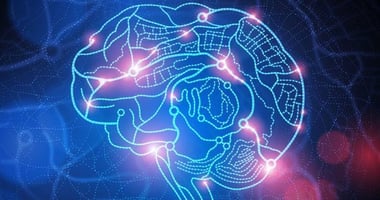Using Neuroplasticity to Supercharge Your Brain by Anna Kucirkova | June 26, 2018 | Courtesy of...
Using Neuro-Plasticity to Supercharge Your Brain
Using Neuro-Plasticity to Supercharge Your Brain
Brain plasticity, also known as neuroplasticity, is a term used by neuroscientists that refers to the brain's ability to change and grow at any age. This flexibility is critically important during our brain development and in shaping personalities. Prior to the 1960s, scientists believed that changes in the brain only took place during infancy and childhood. Most believed that the brain's physical structure was permanent by adulthood. Modern research has concluded that the brain creates new neural pathways and alters existing ones to adapt to new experiences, create new memories, and learn new information, right up until the day we die. Psychologist William James was the first to suggest (in 1890) that the brain was not as unchanging as formerly believed. In his book
The Principles of Psychology, he wrote, "Organic matter, especially nervous tissue, seems endowed with a very extraordinary degree of plasticity." However, his idea was ignored for decades. From the 1920s to the 1960s, researchers began to explore the creation of new neural pathways and followed cases where older adults suffering the aftermath of massive strokes were able to “regain functioning, demonstrating that the brain was much more malleable than previously believed.” Modern researchers have confirmed that the brain is able to rewire itself following damage.
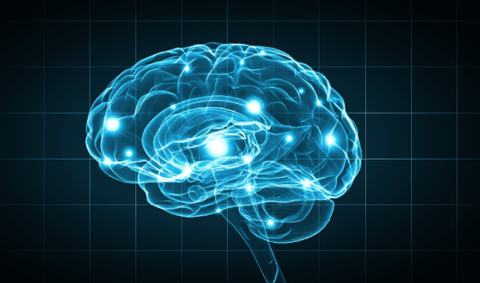 There are a few defining characteristics of neuroplasticity: It varies by age. Though plasticity is present for a lifetime, certain changes are more likely during specific ages. Plasticity involves multiple neural processes. Plasticity never stops and always involves brain cells besides neurons, like glial and vascular cells. Plasticity happens for two different reasons.
There are a few defining characteristics of neuroplasticity: It varies by age. Though plasticity is present for a lifetime, certain changes are more likely during specific ages. Plasticity involves multiple neural processes. Plasticity never stops and always involves brain cells besides neurons, like glial and vascular cells. Plasticity happens for two different reasons.
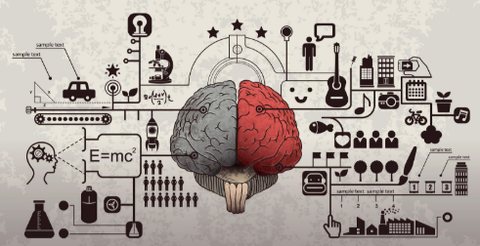 With the right circumstances, the power of brain plasticity can help adult minds grow. Although certain brain functions decay with age, people can tap into plasticity and refresh the brain. Targeted brain plasticity exercises help to keep our brains fit. Even those suffering from brain damage may be able to retrain their brains for better function. The key is identifying what brain functions to target and how to best exercise them. Researchers suggest that there are
various methods of harnessing brain plasticity:
Intermittent Fasting The Society for Neuroscience suggests that fasting increases synaptic plasticity, decreases risk of neurodegenerative diseases, promotes neuron growth and improves cognitive function. When you fast, a metabolic shift reduces the body’s leptin levels. Thus, the brain receives a chemical signal for neurons to produce more energy.
Travel Traveling encourages neurogenesis by exposing your brain to new, fresh, and complex environments. Paul Nussbaum, a neuropsychologist from the University of Pittsburgh explains, “Those new and challenging situations cause the brain to sprout dendrites.” And a week-long tour of another country isn’t necessary to get this benefit; take a weekend road trip to a different city.
Use Mnemonic Devices Memory training promotes connectivity in your brain’s prefrontal parietal network and can slow memory loss with age. Mnemonic devices combine visualization, imagery, spatial navigation, and rhythm and melody, so they can reach various parts of the brain simultaneously.
Learn an Instrument Musicians’ brains show sharp connectivity between brain areas. Neuroscientists explain that the multi-sensory experience of playing a musical instrument allows for the association of motor actions with specific sounds, and memorizing visual patterns leads to new neural networks being formed. As you practice a new instrument, the repetition will allow for neuroplasticity to do its work.
Non-Dominant Hand Exercises Using your non-dominant hand during routine tasks can help form new neural pathways. Doing this strengthens connectivity between your brain cells. Studies also show that non-dominant hand activities improve emotional health and impulse control. Try switching hands during some simple tasks and give your brain a test.
Read Fiction Studies show increased and ongoing connectivity in the brains of participants after reading a novel. Enhanced brain activity occurred in the brain area that controls physical sensations and movement. Scientists explain that reading a novel can be a physical transportation into the fictional world. Shifting into this mental state is crucial for learning how to have complex social relationships.
Expand your Vocabulary When you learn new words, the brain’s visual processes, memory processes, and auditory processes activate. The smaller your vocabulary, the more likely you are to have poor cognitive skills.
Sleep Studies show that sleep “helps learning retention with the growth of dendritic spines, the tiny protrusions that connect brain cells and facilitates the passage of information across synapses.” Getting 7-8 hours of sleep each night will help the brain retain information.
With the right circumstances, the power of brain plasticity can help adult minds grow. Although certain brain functions decay with age, people can tap into plasticity and refresh the brain. Targeted brain plasticity exercises help to keep our brains fit. Even those suffering from brain damage may be able to retrain their brains for better function. The key is identifying what brain functions to target and how to best exercise them. Researchers suggest that there are
various methods of harnessing brain plasticity:
Intermittent Fasting The Society for Neuroscience suggests that fasting increases synaptic plasticity, decreases risk of neurodegenerative diseases, promotes neuron growth and improves cognitive function. When you fast, a metabolic shift reduces the body’s leptin levels. Thus, the brain receives a chemical signal for neurons to produce more energy.
Travel Traveling encourages neurogenesis by exposing your brain to new, fresh, and complex environments. Paul Nussbaum, a neuropsychologist from the University of Pittsburgh explains, “Those new and challenging situations cause the brain to sprout dendrites.” And a week-long tour of another country isn’t necessary to get this benefit; take a weekend road trip to a different city.
Use Mnemonic Devices Memory training promotes connectivity in your brain’s prefrontal parietal network and can slow memory loss with age. Mnemonic devices combine visualization, imagery, spatial navigation, and rhythm and melody, so they can reach various parts of the brain simultaneously.
Learn an Instrument Musicians’ brains show sharp connectivity between brain areas. Neuroscientists explain that the multi-sensory experience of playing a musical instrument allows for the association of motor actions with specific sounds, and memorizing visual patterns leads to new neural networks being formed. As you practice a new instrument, the repetition will allow for neuroplasticity to do its work.
Non-Dominant Hand Exercises Using your non-dominant hand during routine tasks can help form new neural pathways. Doing this strengthens connectivity between your brain cells. Studies also show that non-dominant hand activities improve emotional health and impulse control. Try switching hands during some simple tasks and give your brain a test.
Read Fiction Studies show increased and ongoing connectivity in the brains of participants after reading a novel. Enhanced brain activity occurred in the brain area that controls physical sensations and movement. Scientists explain that reading a novel can be a physical transportation into the fictional world. Shifting into this mental state is crucial for learning how to have complex social relationships.
Expand your Vocabulary When you learn new words, the brain’s visual processes, memory processes, and auditory processes activate. The smaller your vocabulary, the more likely you are to have poor cognitive skills.
Sleep Studies show that sleep “helps learning retention with the growth of dendritic spines, the tiny protrusions that connect brain cells and facilitates the passage of information across synapses.” Getting 7-8 hours of sleep each night will help the brain retain information.
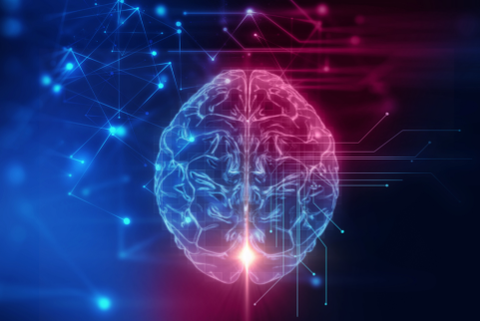 In his book,
Soft-Wired: How the New Science of Brain Plasticity Can Change Your Life, Dr. Michael Merzenich, a leading pioneer in brain plasticity research and co-founder of Posit Science, lists ten core principles necessary for the remodeling of your brain to take place:
In his book,
Soft-Wired: How the New Science of Brain Plasticity Can Change Your Life, Dr. Michael Merzenich, a leading pioneer in brain plasticity research and co-founder of Posit Science, lists ten core principles necessary for the remodeling of your brain to take place:
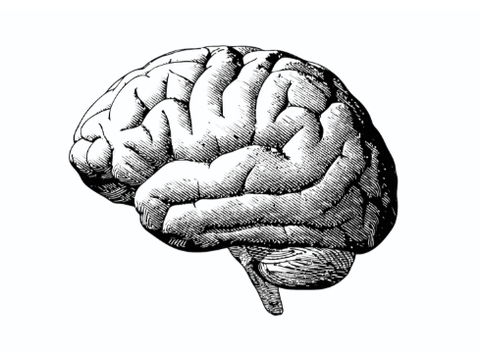 We can understand that the brain is designed to be stimulated and challenged, to carefully examine and interpret the environment, and keep track of the details, all of which is necessary for survival. But, people in society tend to remove themselves from details of life. They don’t keep track of things in their heads anymore; they use smartphones with speed dial, address books, and reminder features. They rely on GPS rather than paying attention to street signs and navigation skills. As we age, we go from the acquisition of abilities to using the abilities acquired earlier in life. We operate on autopilot. The skills and tasks we have mastered are done simply by rote. We are largely disengaged. Modern culture has reduced stimulation on the functional level, while we engage ourselves at an abstract level of operations. Details no longer matter and our brains are deteriorating as a result. As we continue to disengage from the simple act of memory recall, we are letting our brain plasticity lie dormant. But, it is more than possible to maintain plasticity as we age. Humans have the ability to learn new things, master new skills or learn new languages, even into old age. This example of neuroplasticity will most likely involve structural and biochemical changes at the level of the synapse. Adult brains remember new activities through repetition. When an enriched and stimulating environment is offered to a damaged brain, recovery can occur. Not everyone will be able to recover, however. The amount of brain damage and the treatments and rehabilitation will be the key to engaging neuroplasticity.
We can understand that the brain is designed to be stimulated and challenged, to carefully examine and interpret the environment, and keep track of the details, all of which is necessary for survival. But, people in society tend to remove themselves from details of life. They don’t keep track of things in their heads anymore; they use smartphones with speed dial, address books, and reminder features. They rely on GPS rather than paying attention to street signs and navigation skills. As we age, we go from the acquisition of abilities to using the abilities acquired earlier in life. We operate on autopilot. The skills and tasks we have mastered are done simply by rote. We are largely disengaged. Modern culture has reduced stimulation on the functional level, while we engage ourselves at an abstract level of operations. Details no longer matter and our brains are deteriorating as a result. As we continue to disengage from the simple act of memory recall, we are letting our brain plasticity lie dormant. But, it is more than possible to maintain plasticity as we age. Humans have the ability to learn new things, master new skills or learn new languages, even into old age. This example of neuroplasticity will most likely involve structural and biochemical changes at the level of the synapse. Adult brains remember new activities through repetition. When an enriched and stimulating environment is offered to a damaged brain, recovery can occur. Not everyone will be able to recover, however. The amount of brain damage and the treatments and rehabilitation will be the key to engaging neuroplasticity.
Characteristics of Plasticity
 There are a few defining characteristics of neuroplasticity: It varies by age. Though plasticity is present for a lifetime, certain changes are more likely during specific ages. Plasticity involves multiple neural processes. Plasticity never stops and always involves brain cells besides neurons, like glial and vascular cells. Plasticity happens for two different reasons.
There are a few defining characteristics of neuroplasticity: It varies by age. Though plasticity is present for a lifetime, certain changes are more likely during specific ages. Plasticity involves multiple neural processes. Plasticity never stops and always involves brain cells besides neurons, like glial and vascular cells. Plasticity happens for two different reasons.
- As a result of learning, experience, and memory formation
- As a result of damage to the brain.
- Functional plasticity: The brain's ability to move functions from a damaged area of the brain to other undamaged areas.
- Structural plasticity: The brain's ability to actually change its physical structure as a result of learning.
Ways To Harness Plasticity
 With the right circumstances, the power of brain plasticity can help adult minds grow. Although certain brain functions decay with age, people can tap into plasticity and refresh the brain. Targeted brain plasticity exercises help to keep our brains fit. Even those suffering from brain damage may be able to retrain their brains for better function. The key is identifying what brain functions to target and how to best exercise them. Researchers suggest that there are
various methods of harnessing brain plasticity:
Intermittent Fasting The Society for Neuroscience suggests that fasting increases synaptic plasticity, decreases risk of neurodegenerative diseases, promotes neuron growth and improves cognitive function. When you fast, a metabolic shift reduces the body’s leptin levels. Thus, the brain receives a chemical signal for neurons to produce more energy.
Travel Traveling encourages neurogenesis by exposing your brain to new, fresh, and complex environments. Paul Nussbaum, a neuropsychologist from the University of Pittsburgh explains, “Those new and challenging situations cause the brain to sprout dendrites.” And a week-long tour of another country isn’t necessary to get this benefit; take a weekend road trip to a different city.
Use Mnemonic Devices Memory training promotes connectivity in your brain’s prefrontal parietal network and can slow memory loss with age. Mnemonic devices combine visualization, imagery, spatial navigation, and rhythm and melody, so they can reach various parts of the brain simultaneously.
Learn an Instrument Musicians’ brains show sharp connectivity between brain areas. Neuroscientists explain that the multi-sensory experience of playing a musical instrument allows for the association of motor actions with specific sounds, and memorizing visual patterns leads to new neural networks being formed. As you practice a new instrument, the repetition will allow for neuroplasticity to do its work.
Non-Dominant Hand Exercises Using your non-dominant hand during routine tasks can help form new neural pathways. Doing this strengthens connectivity between your brain cells. Studies also show that non-dominant hand activities improve emotional health and impulse control. Try switching hands during some simple tasks and give your brain a test.
Read Fiction Studies show increased and ongoing connectivity in the brains of participants after reading a novel. Enhanced brain activity occurred in the brain area that controls physical sensations and movement. Scientists explain that reading a novel can be a physical transportation into the fictional world. Shifting into this mental state is crucial for learning how to have complex social relationships.
Expand your Vocabulary When you learn new words, the brain’s visual processes, memory processes, and auditory processes activate. The smaller your vocabulary, the more likely you are to have poor cognitive skills.
Sleep Studies show that sleep “helps learning retention with the growth of dendritic spines, the tiny protrusions that connect brain cells and facilitates the passage of information across synapses.” Getting 7-8 hours of sleep each night will help the brain retain information.
With the right circumstances, the power of brain plasticity can help adult minds grow. Although certain brain functions decay with age, people can tap into plasticity and refresh the brain. Targeted brain plasticity exercises help to keep our brains fit. Even those suffering from brain damage may be able to retrain their brains for better function. The key is identifying what brain functions to target and how to best exercise them. Researchers suggest that there are
various methods of harnessing brain plasticity:
Intermittent Fasting The Society for Neuroscience suggests that fasting increases synaptic plasticity, decreases risk of neurodegenerative diseases, promotes neuron growth and improves cognitive function. When you fast, a metabolic shift reduces the body’s leptin levels. Thus, the brain receives a chemical signal for neurons to produce more energy.
Travel Traveling encourages neurogenesis by exposing your brain to new, fresh, and complex environments. Paul Nussbaum, a neuropsychologist from the University of Pittsburgh explains, “Those new and challenging situations cause the brain to sprout dendrites.” And a week-long tour of another country isn’t necessary to get this benefit; take a weekend road trip to a different city.
Use Mnemonic Devices Memory training promotes connectivity in your brain’s prefrontal parietal network and can slow memory loss with age. Mnemonic devices combine visualization, imagery, spatial navigation, and rhythm and melody, so they can reach various parts of the brain simultaneously.
Learn an Instrument Musicians’ brains show sharp connectivity between brain areas. Neuroscientists explain that the multi-sensory experience of playing a musical instrument allows for the association of motor actions with specific sounds, and memorizing visual patterns leads to new neural networks being formed. As you practice a new instrument, the repetition will allow for neuroplasticity to do its work.
Non-Dominant Hand Exercises Using your non-dominant hand during routine tasks can help form new neural pathways. Doing this strengthens connectivity between your brain cells. Studies also show that non-dominant hand activities improve emotional health and impulse control. Try switching hands during some simple tasks and give your brain a test.
Read Fiction Studies show increased and ongoing connectivity in the brains of participants after reading a novel. Enhanced brain activity occurred in the brain area that controls physical sensations and movement. Scientists explain that reading a novel can be a physical transportation into the fictional world. Shifting into this mental state is crucial for learning how to have complex social relationships.
Expand your Vocabulary When you learn new words, the brain’s visual processes, memory processes, and auditory processes activate. The smaller your vocabulary, the more likely you are to have poor cognitive skills.
Sleep Studies show that sleep “helps learning retention with the growth of dendritic spines, the tiny protrusions that connect brain cells and facilitates the passage of information across synapses.” Getting 7-8 hours of sleep each night will help the brain retain information.
How Exactly Does Plasticity Improve the Mind?
 In his book,
Soft-Wired: How the New Science of Brain Plasticity Can Change Your Life, Dr. Michael Merzenich, a leading pioneer in brain plasticity research and co-founder of Posit Science, lists ten core principles necessary for the remodeling of your brain to take place:
In his book,
Soft-Wired: How the New Science of Brain Plasticity Can Change Your Life, Dr. Michael Merzenich, a leading pioneer in brain plasticity research and co-founder of Posit Science, lists ten core principles necessary for the remodeling of your brain to take place:
- Change is mostly limited to situations in which the brain is in the mood for it. If you are engaged, your brain will be too.
- Be more motivated and more alert. Those intensely focused on the task and devoted to mastering something will experience greater change.
- The strengths of the connections of neurons that are engaged together, moment by moment, are actually what changes.
- Learning-motivated changes in connections increase cell-to-cell cooperation.
- The brain strengthens its connections between teams of neurons when things occur in the same order over time.
- Though the first brain changes are temporary, changes become permanent if your brain judges the experience to be worthy of remembrance.
- Brain changes happen through internal mental rehearsal just as physical rehearsal in the real world helps us learn and execute specific tasks.
- Memory is the key to learning. When you learn a new skill, your brain notes the good, the bad, and the ugly. The most recent good try is the one that the brain remembers.
- When your brain strengthens a connection in advancing your mastery of a task, it weakens unnecessary connections of neurons that weren’t used.
- Brain plasticity can go either way; you can generate negative changes just as easily as positive changes.
Maintaining Plasticity
 We can understand that the brain is designed to be stimulated and challenged, to carefully examine and interpret the environment, and keep track of the details, all of which is necessary for survival. But, people in society tend to remove themselves from details of life. They don’t keep track of things in their heads anymore; they use smartphones with speed dial, address books, and reminder features. They rely on GPS rather than paying attention to street signs and navigation skills. As we age, we go from the acquisition of abilities to using the abilities acquired earlier in life. We operate on autopilot. The skills and tasks we have mastered are done simply by rote. We are largely disengaged. Modern culture has reduced stimulation on the functional level, while we engage ourselves at an abstract level of operations. Details no longer matter and our brains are deteriorating as a result. As we continue to disengage from the simple act of memory recall, we are letting our brain plasticity lie dormant. But, it is more than possible to maintain plasticity as we age. Humans have the ability to learn new things, master new skills or learn new languages, even into old age. This example of neuroplasticity will most likely involve structural and biochemical changes at the level of the synapse. Adult brains remember new activities through repetition. When an enriched and stimulating environment is offered to a damaged brain, recovery can occur. Not everyone will be able to recover, however. The amount of brain damage and the treatments and rehabilitation will be the key to engaging neuroplasticity.
We can understand that the brain is designed to be stimulated and challenged, to carefully examine and interpret the environment, and keep track of the details, all of which is necessary for survival. But, people in society tend to remove themselves from details of life. They don’t keep track of things in their heads anymore; they use smartphones with speed dial, address books, and reminder features. They rely on GPS rather than paying attention to street signs and navigation skills. As we age, we go from the acquisition of abilities to using the abilities acquired earlier in life. We operate on autopilot. The skills and tasks we have mastered are done simply by rote. We are largely disengaged. Modern culture has reduced stimulation on the functional level, while we engage ourselves at an abstract level of operations. Details no longer matter and our brains are deteriorating as a result. As we continue to disengage from the simple act of memory recall, we are letting our brain plasticity lie dormant. But, it is more than possible to maintain plasticity as we age. Humans have the ability to learn new things, master new skills or learn new languages, even into old age. This example of neuroplasticity will most likely involve structural and biochemical changes at the level of the synapse. Adult brains remember new activities through repetition. When an enriched and stimulating environment is offered to a damaged brain, recovery can occur. Not everyone will be able to recover, however. The amount of brain damage and the treatments and rehabilitation will be the key to engaging neuroplasticity.



